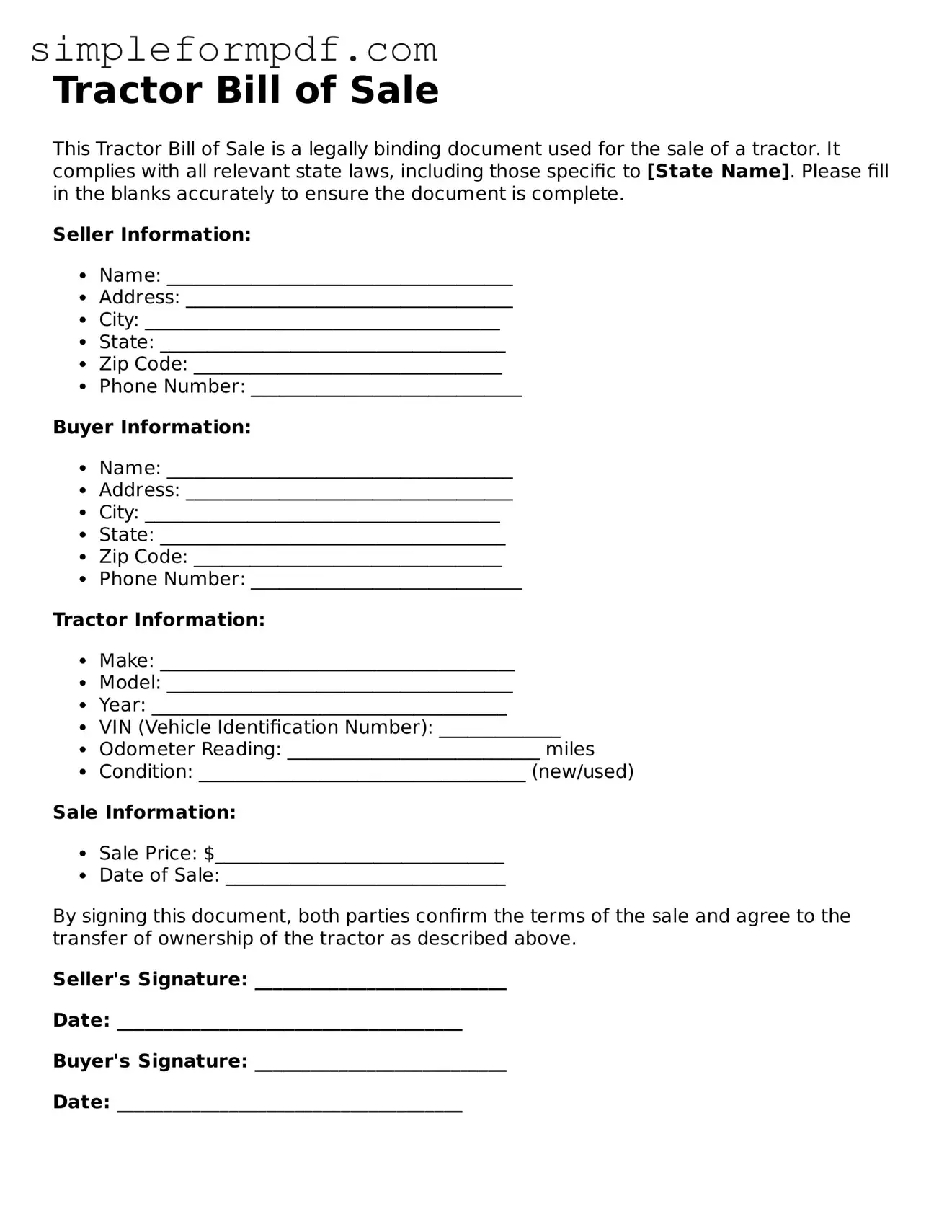Tractor Bill of Sale
This Tractor Bill of Sale is a legally binding document used for the sale of a tractor. It complies with all relevant state laws, including those specific to [State Name]. Please fill in the blanks accurately to ensure the document is complete.
Seller Information:
- Name: _____________________________________
- Address: ___________________________________
- City: ______________________________________
- State: _____________________________________
- Zip Code: _________________________________
- Phone Number: _____________________________
Buyer Information:
- Name: _____________________________________
- Address: ___________________________________
- City: ______________________________________
- State: _____________________________________
- Zip Code: _________________________________
- Phone Number: _____________________________
Tractor Information:
- Make: ______________________________________
- Model: _____________________________________
- Year: ______________________________________
- VIN (Vehicle Identification Number): _____________
- Odometer Reading: ___________________________ miles
- Condition: ___________________________________ (new/used)
Sale Information:
- Sale Price: $_______________________________
- Date of Sale: ______________________________
By signing this document, both parties confirm the terms of the sale and agree to the transfer of ownership of the tractor as described above.
Seller's Signature: ___________________________
Date: _____________________________________
Buyer's Signature: ___________________________
Date: _____________________________________
